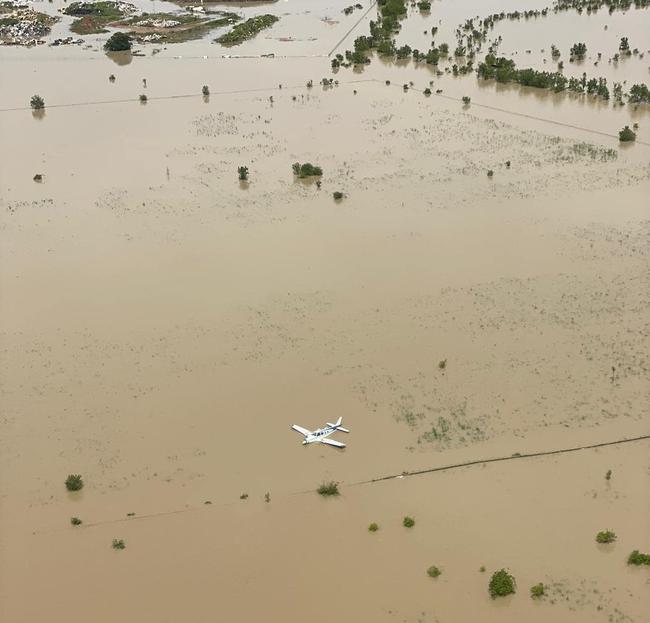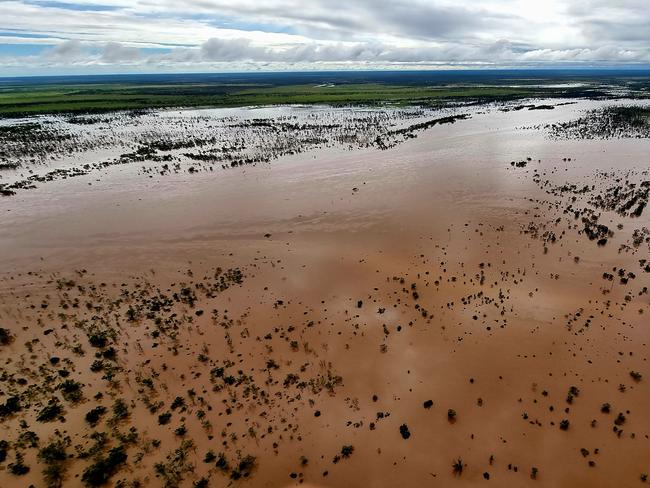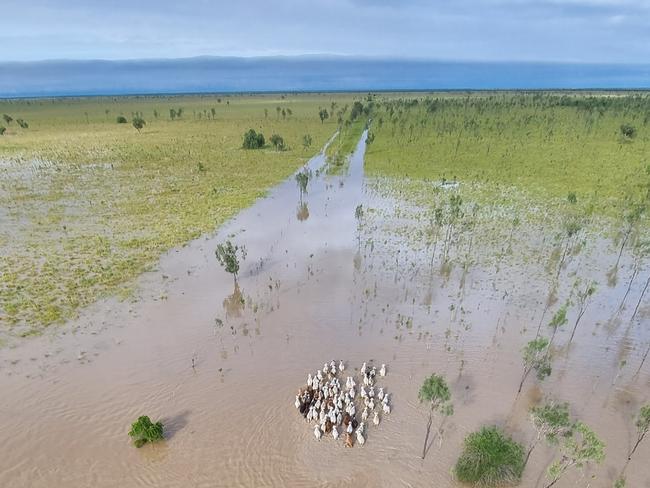Thousands of cattle lost to Gulf of Carpinteria floods
Record breaking flood water in the Gulf of Carpentaria has begun to recede, allowing graziers to return to the cattle stations that over the weekend resembled inland seas.

Record-breaking flood water in the Gulf of Carpentaria has begun to recede, allowing some graziers to return to cattle stations that at the weekend resembled inland seas.
Many were met with scenes of total devastation, with homesteads, sheds and infrastructure swamped by muddy brown water and potentially tens of thousands of cattle lost.
Flood water reached unprecedented levels in Burketown, Gregory and Doomadgee, causing mass evacuations, and authorities say it could be weeks until residents there are able to return home.
The long-term impact of the monsoonal low will be drastically different for different parts of the north.
In the higher country around the Barkly Tableland on the Queensland-Northern Territory border, the rain is expected to lead to a boom in pasture growth after much of the past decade being spent in drought.
Closer to the coast, the impact has been devastating.
Grazier Sam Daniels estimated he may have lost 10,000 cattle on Escott Station, southwest of Burketown. “It’s too early to call but it looks like it could be 10,000,” he said. “You just don’t know until things start to dry out.
“Some of them will be quite unwell for a while. We’re flying in hay and will probably be feeding them hay for a while until feed starts to grow.”
Ironically, the deep water that sat over the paddocks for days could lead to pasture dieback.
“All the grass was at maturity because we had such a good summer,” Mr Daniels said. “When it gets waterlogged or water goes over the top, it normally dies back, so you can actually end up with a drought out of it.”

He said immediate concerns were fixing roads and other infrastructure to enable the clean-up to begin.
About 50cm of water went through Lloyd Hick’s house, 1.5m off the ground, on Thorntonia Station, north of Camooweal on the Queensland-NT border.
“We’ve never had water this deep before,” Mr Hick said. “We do live in the Gulf and get big storms but never to this level.”
The water at Thorntonia has receded, allowing him to return home to begin the clean-up. Several fences were damaged and tanks and solar pumps had washed away. He was expecting “very minimal” stock losses but “I think it will be a different story north of us going towards Burketown”, he said.
Lorraine Station, between Cloncurry and Burketown, reported flood water through the property as the highest on record.
Queensland police on Monday said it was still unsafe for Burketown residents to return to their homes and warned people to limit their movement around the floodwater because of crocodiles and other unseen hazards.

The town of Urandangi, 150km southwest of Mount Isa, has been partly evacuated as water makes its way down the Georgina River towards Lake Eyre.
The federal and state governments have released grants for individuals and families and loans of up to $250,000 for businesses to help rebuild damaged infrastructure.
Mount Isa-based Queensland MP Robbie Katter called for a bigger funding package “straight away”.




To join the conversation, please log in. Don't have an account? Register
Join the conversation, you are commenting as Logout